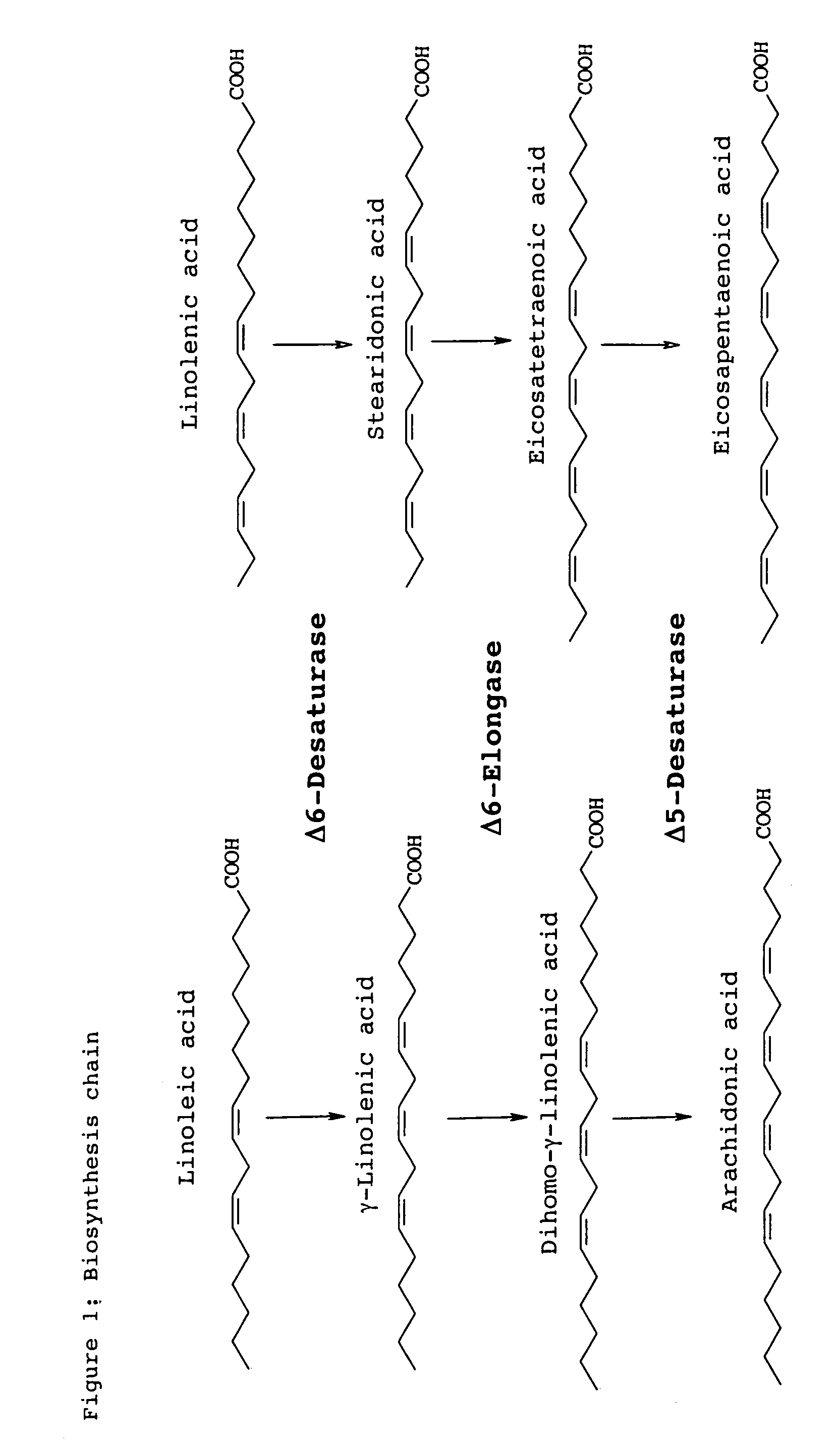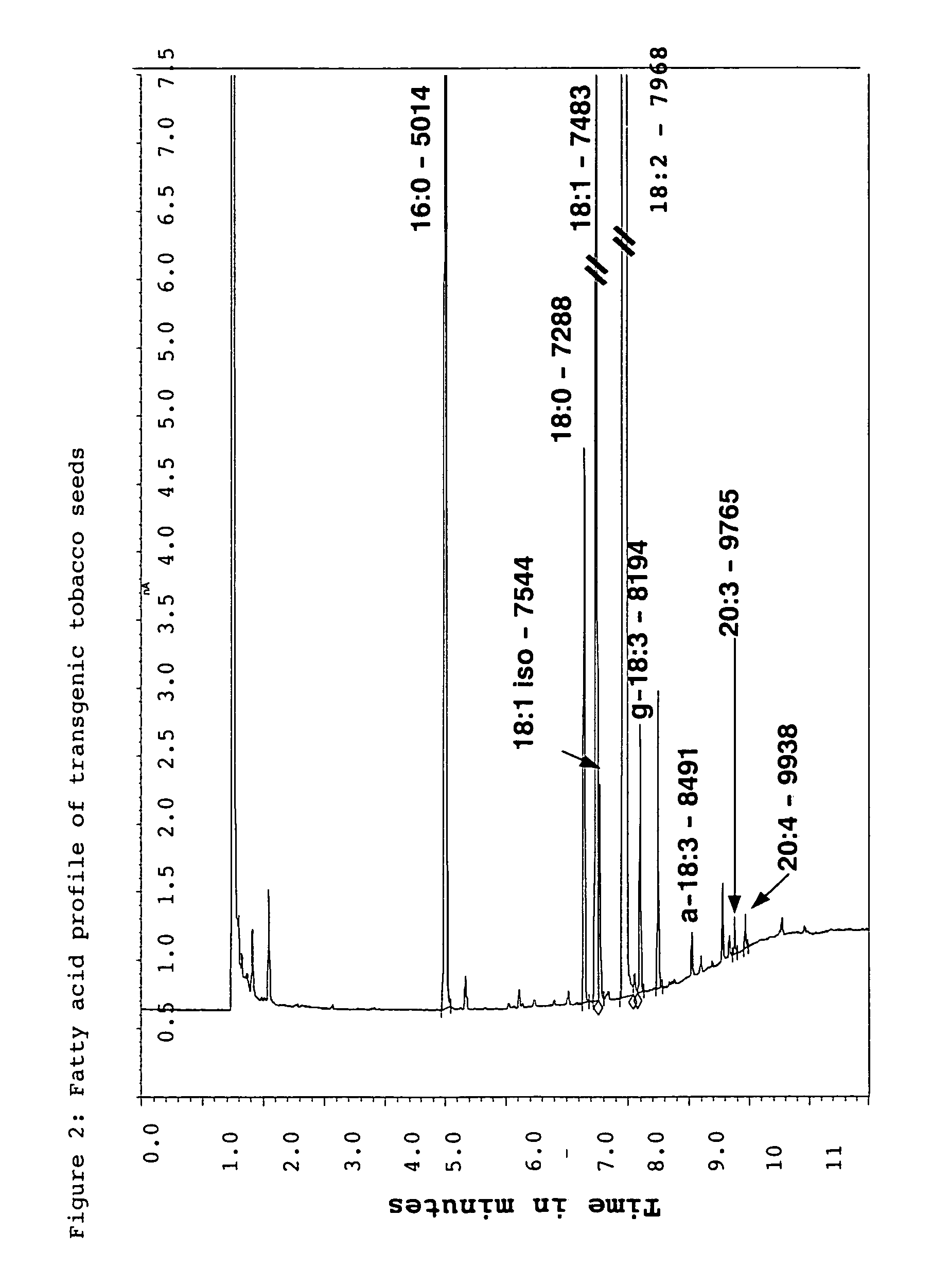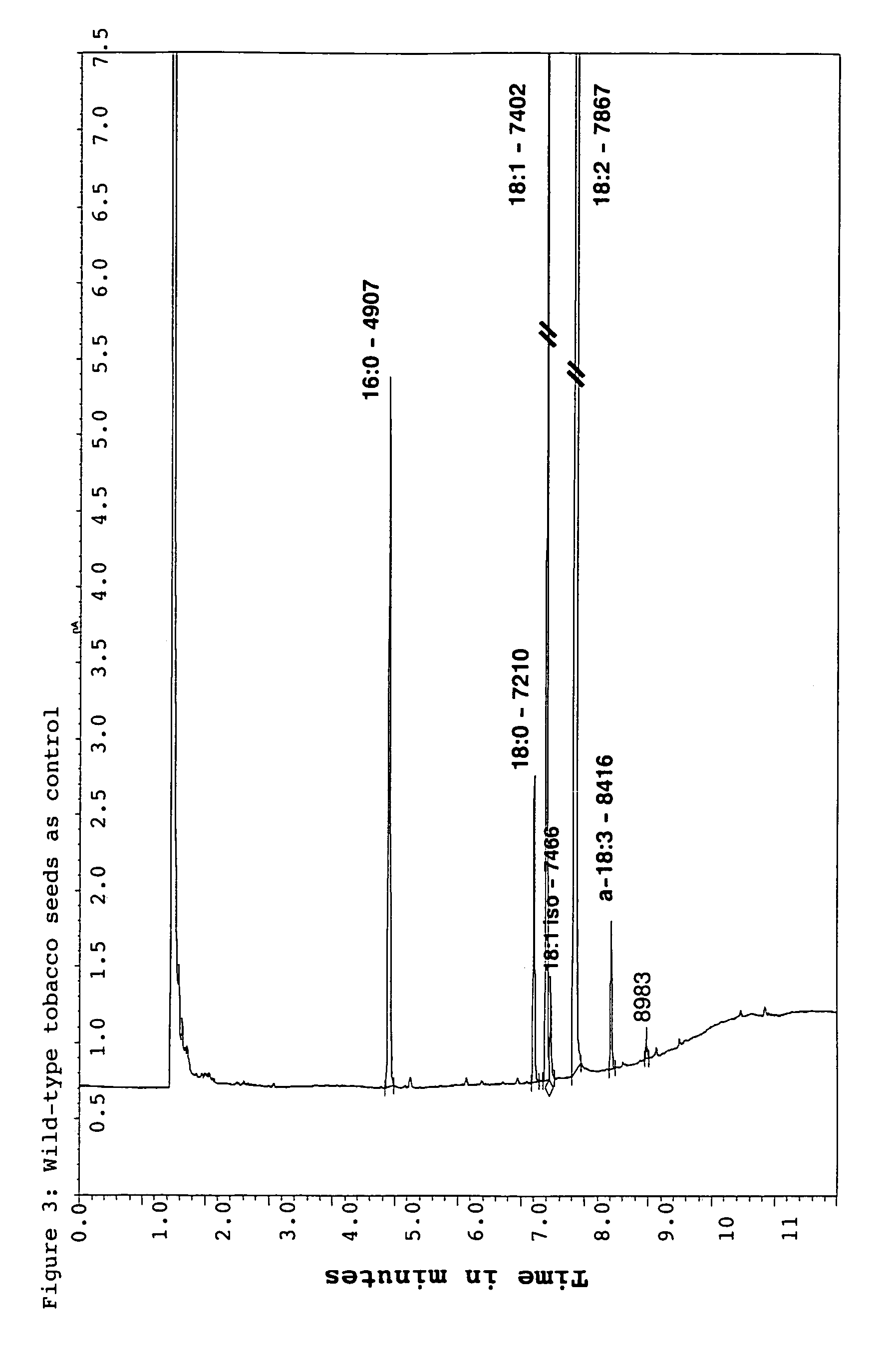Method for producing multiple unsaturated fatty acids in plants
a technology of unsaturated fatty acids and plants, which is applied in the field of fatty acid esters production, can solve the problems of limited amounts of the desired polyunsaturated fatty acids, time-consuming and difficult procedures, and incomplete biochemical characterization of various desaturases
- Summary
- Abstract
- Description
- Claims
- Application Information
AI Technical Summary
Benefits of technology
Problems solved by technology
Method used
Image
Examples
example 1
General Methods
a) General Cloning Methods:
[0141]Cloning methods such as, for example, restriction cleavages, agarose gel electrophoresis, purification of DNA fragments, transfer of nucleic acids onto nitrocellulose and nylon membranes, linking of DNA fragments, transformation of Escherichia coli and yeast cells, bacterial cultures and sequence analysis of recombinant DNA were carried out as described in Sambrook et al. (1989) (Cold Spring Harbor Laboratory Press: ISBN 0-87969-309-6) or Kaiser, Michaelis and Mitchell (1994) “Methods in Yeast Genetics” (Cold Spring Harbor Laboratory Press: ISBN 0-87969-451-3).
b) Chemicals
[0142]Unless otherwise stated in the text, the chemicals used were obtained in analytical-grade quality from Fluka (Neu-Ulm), Merck (Darmstadt), Roth (Karlsruhe), Serva (Heidelberg) and Sigma (Deisenhofen). Solutions were made with purified, pyrogen-free water, hereinbelow referred to as H2O, from a Milli-Q Water System water purification system (Millipore, Eschborn)....
example 2
Isolation of Total RNA and Poly(A)+-RNA from Plants
[0143]Total RNA is isolated from plants such as linseed and oilseed rape and the like following a method described by Logemann et al. (1987, Anal. Biochem. 163, 21). The total RNA can be obtained from protonemal tissue from moss using the GTC method (Reski et al., 1994, Mol. Gen. Genet., 244:352-359).
example 3
Transformation of Agrobacterium
[0144]The Agrobacterium-mediated transformation of plants can be carried out for example using the Agrobacterium tumefaciens strain GV3101- (pMP90-) (Koncz and Schell, Mol. Gen. Genet. 204 (1986) 383-396) or LBA4404- (Clontech) or C58C1 pGV2260 (Deblaere et al 1984, Nucl. Acids Res. 13, 4777-4788)). The transformation can be carried out by standard transformation techniques (also Deblaere et al. 1984).
PUM
| Property | Measurement | Unit |
|---|---|---|
| pH | aaaaa | aaaaa |
| temperature | aaaaa | aaaaa |
| temperature | aaaaa | aaaaa |
Abstract
Description
Claims
Application Information
 Login to View More
Login to View More - R&D
- Intellectual Property
- Life Sciences
- Materials
- Tech Scout
- Unparalleled Data Quality
- Higher Quality Content
- 60% Fewer Hallucinations
Browse by: Latest US Patents, China's latest patents, Technical Efficacy Thesaurus, Application Domain, Technology Topic, Popular Technical Reports.
© 2025 PatSnap. All rights reserved.Legal|Privacy policy|Modern Slavery Act Transparency Statement|Sitemap|About US| Contact US: help@patsnap.com



